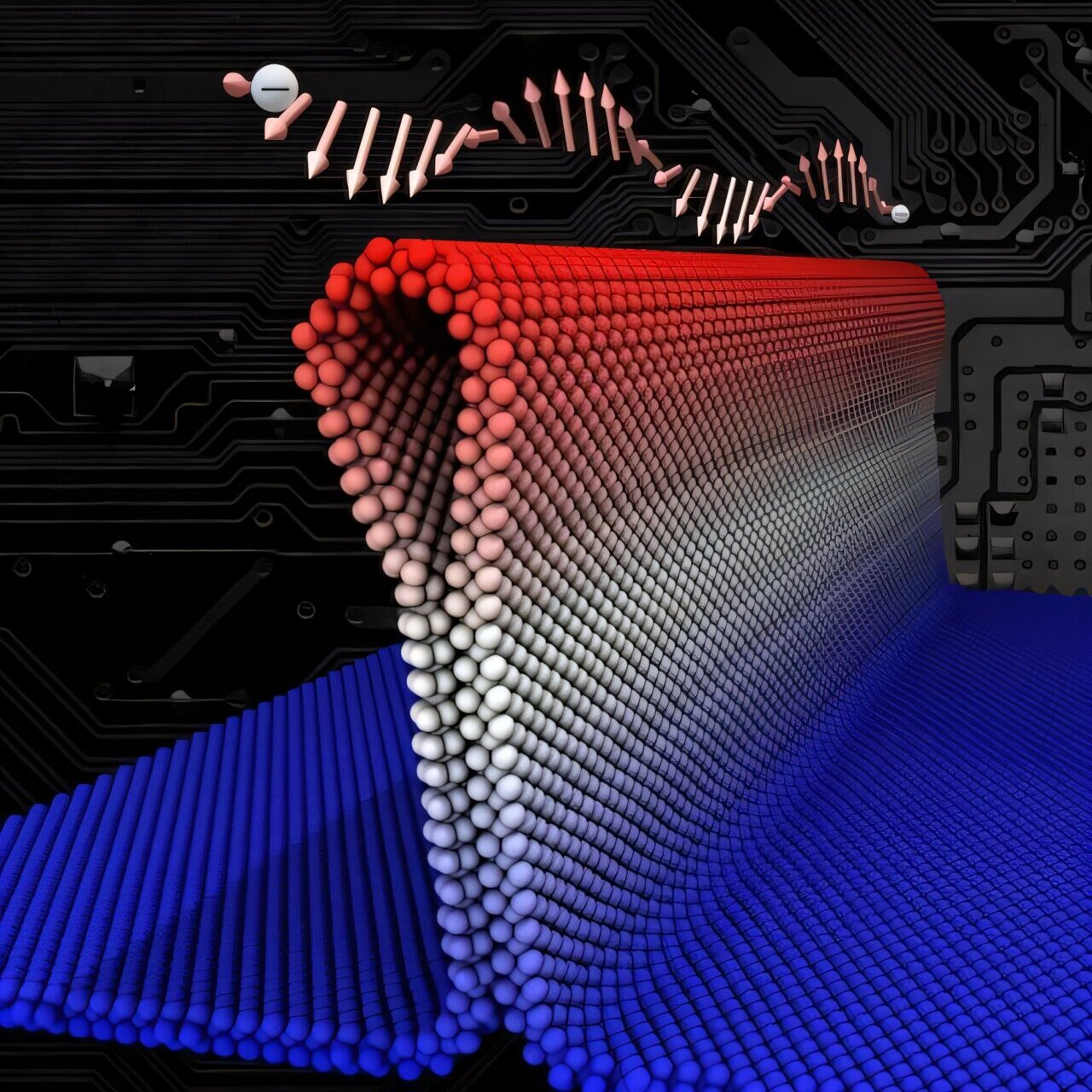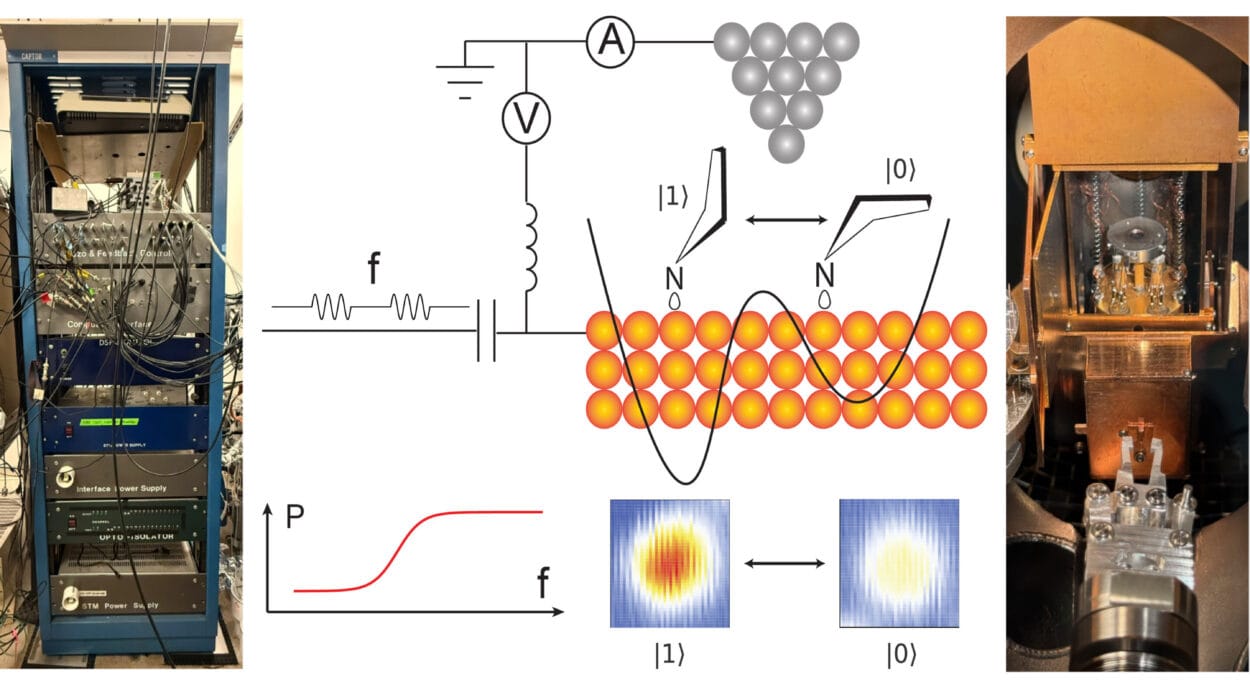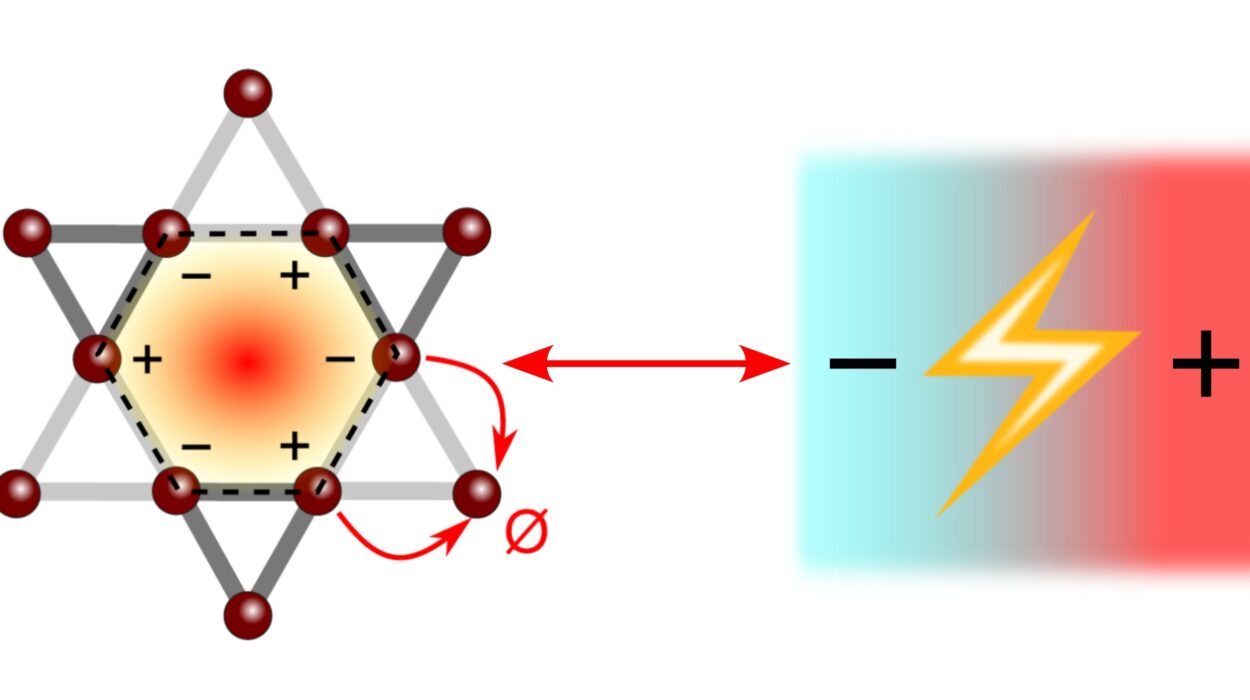Wrinkles are usually seen as a flaw—on faces, clothes, or even in materials. But in the world of next-generation electronics, wrinkles could be the key to unlocking a new era of computing. Scientists at Rice University have discovered that tiny creases in ultrathin, two-dimensional materials can control electrons in a way that was once thought impossible. These wrinkles don’t just bend materials—they bend the rules of physics, paving the way for smaller, faster, and far more energy-efficient devices.
At the heart of this discovery lies the strange and fascinating property of electrons known as spin. Unlike traditional electronics, which rely on the charge of electrons moving through silicon, future computing may instead harness spin—a quantum trait that can be thought of as an electron’s tiny internal compass, pointing either “up” or “down.”
Harnessing spin in this way could usher in a revolution known as spintronics, which promises to overcome the limitations of today’s silicon-based technology. In a world where data centers devour massive amounts of electricity, the potential for low-energy, high-efficiency devices couldn’t be more urgent.
The Challenge of Holding Onto Spin
But there’s a catch. Spin is delicate. When electrons scatter as they bump into atoms inside a material, the information stored in their spin can easily be lost. For spintronics to become practical, scientists need a way to make spin states last long enough to be useful.
That’s where the Rice University breakthrough comes in. In a study published in Matter, materials scientists found that bending atomically thin sheets of a material called molybdenum ditelluride can create a special spin state known as a persistent spin helix (PSH). Unlike in ordinary materials, where an electron’s spin changes every time its direction changes, in a PSH state the spin stays fixed—even when the electron collides or scatters. This makes it possible to preserve spin information for much longer distances and times.
Wrinkles with Quantum Power
The key lies in the wrinkles themselves. Imagine a sheet of paper being bent: the top side stretches while the bottom side compresses. In 2D materials, this stretching and compressing doesn’t just change shape—it shifts charges within the material, creating what scientists call flexoelectric polarization.
This built-in electric field interacts with the spins of electrons traveling through the material. The greater the curvature, the stronger the interaction. At very sharp bends—like hairpin loops in a folded sheet—the effect becomes so powerful that electrons adopt the coveted helix-shaped spin texture. In these regions, spin flips between “up” and “down” over a distance of just one nanometer—the shortest spin-precession length ever reported.
For electronics, this means devices could be designed at incredibly compact scales, with spintronic components operating in spaces smaller than a virus particle.
A Simple Pinch, A Profound Shift
What makes this discovery especially exciting is its elegance. As Rice professor Boris Yakobson explained, a “humble mechanical pinch” can generate the complex spin states that researchers have been struggling to achieve in laboratories for years. Wrinkles and folds—features that appear naturally in 2D materials—turn out to be tools for quantum engineering.
Sunny Gupta, a Rice alumnus and one of the study’s first authors, put it best: “Quantum behaviors and elastic mechanics are two different areas of physics that rarely intersect. Yet here we showed that bending something as thin as a single layer of atoms can profoundly influence how electrons behave at the quantum level.”
This blending of the everyday and the exotic—the simple act of bending and the subtle dance of quantum spins—makes the discovery not only groundbreaking but also poetic.
Toward the Future of Spintronics
The implications are enormous. If researchers can harness wrinkles to reliably control spin, they could build ultracompact spintronic devices that store and process data with far less energy than today’s transistors. This could transform the way we design everything from smartphones to supercomputers, helping to reduce the soaring energy costs of global computing infrastructure.
Moreover, the discovery provides a new strategy for exploring other exotic states of matter. Wrinkled 2D materials may host a variety of unusual quantum textures, each with its own potential applications in technology.
Wrinkles That Rewrite the Rules
Einstein once said that imagination is more important than knowledge. The Rice University team has shown that imagination—seeing something as ordinary as a wrinkle not as a defect but as a tool—can lead to profound innovation.
These tiny folds remind us that the future of technology may not come only from expensive machines or massive facilities, but from rethinking the smallest details of nature. In a world desperately in need of more sustainable, efficient computing, wrinkles might just be the most beautiful imperfection of all.
More information: Sunny Gupta et al, Mechanical crease in 2D materials—A platform for large spin splitting and persistent spin helix, Matter (2025). DOI: 10.1016/j.matt.2025.102378






